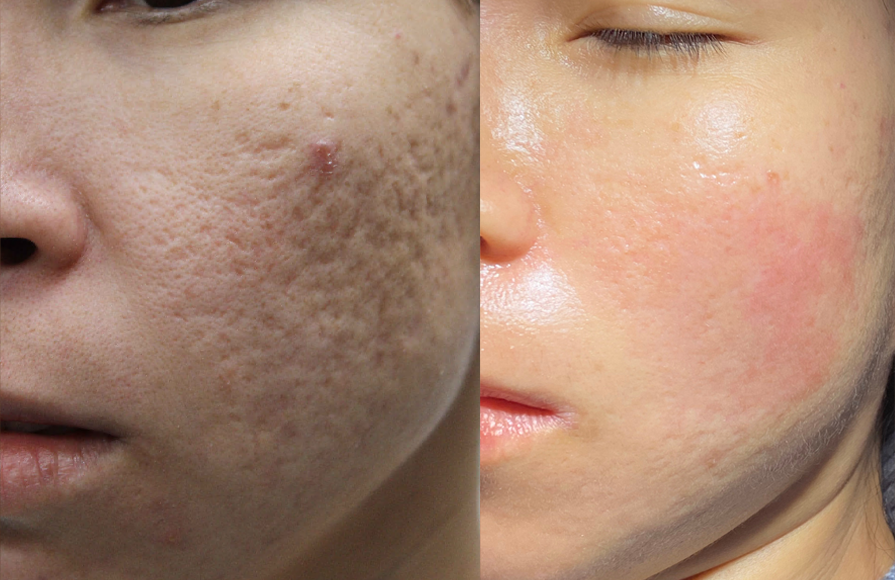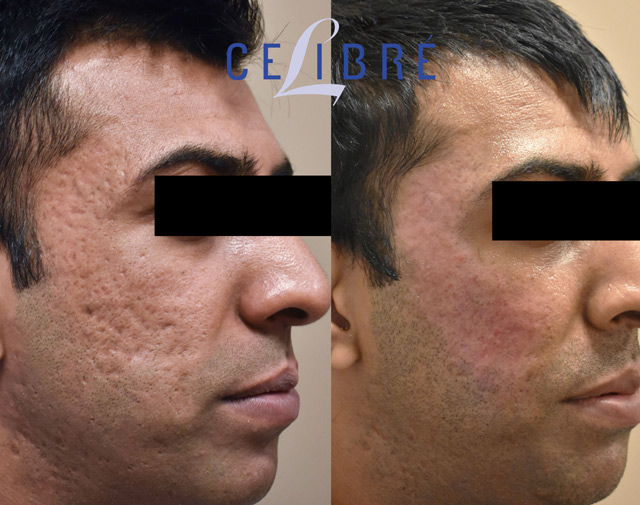Best Acne Scars Treatment: Advanced Techniques for Easier Skin
Best Acne Scars Treatment: Advanced Techniques for Easier Skin
Blog Article
Exploring Skin Problem: Identifying and Dealing With Acne Scars for Healthier Skin
Acne scars represent a considerable worry for individuals looking for to keep healthy and balanced skin, as they can influence both look and self-confidence. Recognizing the numerous types of scars, from atrophic to hypertrophic, is crucial for establishing ideal treatment options. While professional interventions like chemical peels and microneedling can be reliable, the relevance of customized treatment plans can not be overemphasized. In addition, preventative procedures play an essential duty in reducing future scarring. As we check out these facets, one need to think about exactly how the ideal strategy can bring about transformative results.
Recognizing Acne Scars

The body's all-natural healing process can cause either atrophic scars, which appear as clinical depressions in the skin, or hypertrophic scars, which are raised and result from overflow of collagen. In addition, the psychological toll of acne scars need to not be ignored; lots of people report feelings of embarrassment, anxiousness, and decreased self-esteem. This emotional concern can impact social communications and total lifestyle.
Dealing with acne scars needs a thorough understanding of their development and impact. Understanding of the possibility for lasting effects associated with untreated scars can inspire individuals to look for ideal treatments. Early intervention and efficient administration methods can significantly improve skin appearance and improve emotional resilience, stressing the significance of comprehending the intricacies surrounding acne scars.
Sorts Of Acne Marks
Acne marks can be categorized into distinct types, each displaying one-of-a-kind qualities and calling for particular treatment methods. acne and acne scars treatment. The main kinds of acne scars consist of atrophic, hypertrophic, and keloid marks

Hypertrophic scars, in comparison, are raised over the skin level and are the result of extreme collagen manufacturing throughout the healing procedure. They typically remain within the limits of the initial acne sore. Keloid marks are similar however extend past the initial injury website, developing bigger, raised locations that can be scratchy or agonizing.
Recognizing these kinds of marks is essential for choosing proper therapy alternatives. Various marks may respond better to specific therapies, such as laser therapies, fillers, or medical interventions, emphasizing the importance of a customized approach to acne mark monitoring.
Identifying Your Marks
Acne scars generally fall into two categories: hypertrophic and atrophic marks. These can even more be classified into ice-pick marks, boxcar marks, and rolling marks, each displaying distinct features and calling for various strategies for assessment.
Hypertrophic scars, on the other hand, are increased and take place as a result of too much collagen manufacturing throughout the healing process. Recognizing the certain attributes of your marks-- such as deepness, width, and structure-- is crucial for correct recognition (acne scars). Additionally, consider the distribution of scars throughout your skin, as this can show the extent and period of the acne problem
Involving with a skin doctor can supply useful understandings into the nature of your scars, aiding in the differentiation in between numerous kinds. An extensive understanding of your scars will ultimately bring about a more customized and effective treatment plan, making certain a more clear and much healthier skin tone.
Therapy Options Readily Available
Recognizing the certain type of acne scars existing on your skin lays the i loved this groundwork for exploring reliable therapy options. Usual sorts of acne scars consist of atrophic (depressed), hypertrophic (raised), and post-inflammatory erythema.
For atrophic marks, choices such as chemical peels, microneedling, and laser resurfacing are widely made use of. Chemical peels make use of acids to eliminate the outer layer of skin, advertising new cell development. Microneedling includes tiny needles that produce micro-injuries, stimulating collagen manufacturing. Laser resurfacing targets damaged skin cells, boosting texture and tone.
Hypertrophic scars can be treated with corticosteroid shots to flatten the mark or official statement laser therapy to minimize redness and enhance look. Silicone gel sheets and pressure dressings might also help in managing increased marks.
Furthermore, dermal fillers can momentarily fill out depressions from atrophic scars, while medical excision may be proper for extreme cases. Each therapy alternative has its factors to consider and benefits, making it important to seek advice from a skin doctor. They can offer individualized recommendations based on the type and extent of your scars, as well as your skin kind and total health.
Tips for Prevention
Efficient avoidance strategies can substantially lower the likelihood of developing acne scars. The initial step is to keep a regular skincare routine that includes gentle cleansing, exfoliation, and moisturizing. Utilizing non-comedogenic products assists stop clogged up pores, which can aggravate acne. Additionally, incorporating topical treatments including salicylic acid or benzoyl peroxide can successfully minimize and manage breakouts inflammation.
Avoiding need to stand out or select acne sores is vital, as this can cause deeper skin damage and increase the threat of scarring. Rather, think about using a cold compress or over-the-counter therapies to minimize swelling and inflammation.
Sun defense is an additional important aspect of avoidance; ultraviolet (UV) rays can darken marks and impede the recovery procedure. Applying a broad-spectrum sunscreen with at least SPF 30 daily can safeguard the skin and advertise also recovery.
Finally, preserving a balanced diet abundant in vitamins, antioxidants, and minerals supports skin health and wellness and healing. Staying hydrated and managing stress degrees can additionally play a substantial function in reducing acne flare-ups. By carrying out these techniques, people can considerably lessen their opportunities of developing acne marks.
Conclusion
In final thought, understanding and identifying acne scars Clicking Here is essential for effective therapy and attaining healthier skin. Different kinds of acne scars, including hypertrophic and atrophic marks, necessitate particular treatments tailored to individual requirements.
The body's natural recovery process can result in either atrophic scars, which show up as clinical depressions in the skin, or hypertrophic scars, which are increased and result from overflow of collagen. They are more divided into three subtypes: ice choice marks, boxcar scars, and rolling marks. Acne marks usually fall into two categories: hypertrophic and atrophic scars. These can further be categorized into ice-pick marks, boxcar scars, and rolling scars, each exhibiting distinctive qualities and calling for different strategies for evaluation.
Various kinds of acne scars, including hypertrophic and atrophic scars, demand details interventions customized to individual requirements.
Report this page